Victor Clements reviews an important recent paper by James Fenton. This will be of interest to those concerned about the natural environment of the Highlands and particularly the balance between moorland, native trees and deer. The paper was published on 9 October 2019.
Victor Clements writes:
James Fenton was an upland ecologist with the National Trust for Scotland, worked extensively on peat bogs in Antarctica, and has for many years questioned the policy priority given by government and its agencies to native woodland over moorland. He advises the Scottish Gamekeepers Association (SGA). Moorland is a common and widespread habitat in Scotland, but it is rare at an international level. Native woodlands are fragmented and often threatened in Scotland, but birch and pine dominated forests are widespread at an international level. So, which is more important in Scotland, the habitat that is rare here, or the habitat that is rare at an international level? If we want both, do we really understand the interactions between them, and will the appropriate balance we might hope to achieve in the future be the same as that we think existed in the past?
James Fenton’s paper is available online.
Everyone knows that we used to have a lot more native woodland in Scotland. We hear about the Great Wood of Caledon. We can see pine stumps buried in peat hags which are evocative and persuasive. There is no doubt that tree cover in Scotland was once a lot more widespread than it is today. The comforting narrative surrounding conservation management in Scotland focuses on centuries of mismanagement and exploitation of our uplands, and the less deer/ more trees debate is in many ways a proxy for land reform. We tend to think that a significant change has occurred relatively recently and that we (or they) are to blame.
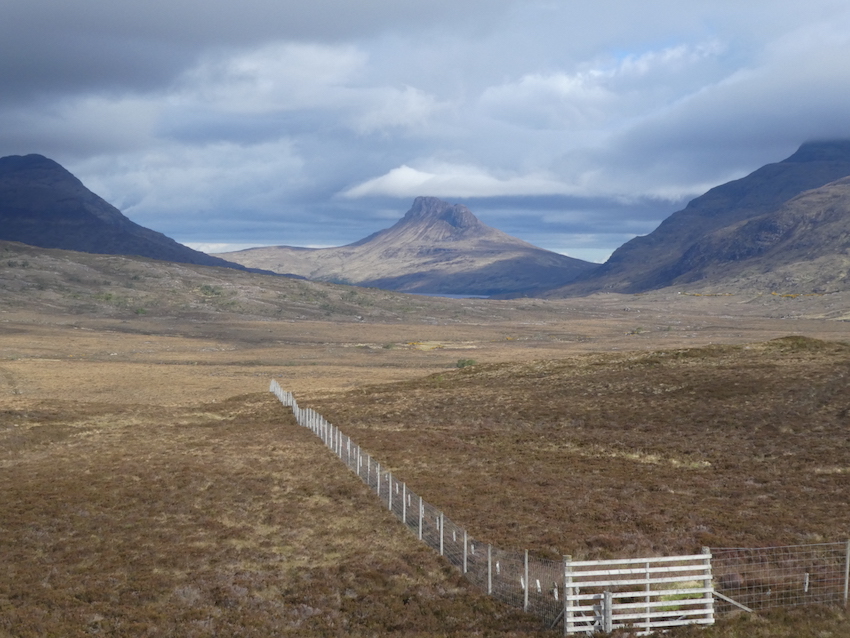
But why did these woodlands decline, when did they decline, and what should we be trying to achieve now going forwards? James Fenton’s paper looks at issues from first principles, at biological processes and experiences from other countries, and asks the reader to have an open mind from the outset about what our landscape should look like. This is not easy as the work undertaken by Frank Fraser Darling in his West Highland Survey has dominated our thinking about the Highlands for seventy years, and government, agencies, writers and commentators all buy in to this. Scotland’s “wet desert” is taken as a given truth. It is regarded as unnatural and impoverished, that we need to open our eyes and accept and then deliver a much more ambitious vision for the future of our uplands. It takes a very brave individual to express an alternative view. James Fenton’s paper is such an alternative view, and we should be prepared to read it with a critical but open mind. As a native woodland advisor myself, I think there are very credible arguments in here that are relevant to at least parts of the Highlands, particularly in the west and north west.
Why did our native woodlands decline?
It is now widely accepted that our climate following the last Ice Age was very conducive to tree growth in the Highlands, but a transition to cooler and wetter conditions started to favour the growth of peat over woodlands, and the woodlands started to decline. For those that doubt this, I would ask them to consider the aspen tree. The pollen record suggests that it was a pioneer species after the last Ice Age, often the first species to reach a new location. This suggests it was a species which could seed profusely and spread quickly, but aspen rarely seeds today. There must be something fairly fundamental that is different now. Aspen does seed in Scotland after a drought year, having been stressed by heat or lack of moisture the year before. This tends to happen every 20 years or so (1976, 1996, 2019), but not otherwise. It is likely therefore that our climate now is not just a little bit different from what existed before, but very significantly different. The pine stumps we see covered in several feet of peat confirm that something very detrimental to woodlands happened many thousands of years ago, either gradually or otherwise. Peat could not have accumulated under a live canopy. Man may have over exploited woods, burned them and grazed them, but all this is relatively recent. For most of our recorded history, the Highlands have been relatively open. We may have exacerbated woodland decline in recent centuries, but something much more powerful must have been at work in the thousands of years beforehand. Can our climate really have changed so much, and is this to blame for reducing our woodland cover? Is our future going to look the same as our past, or must our expectations now be different.
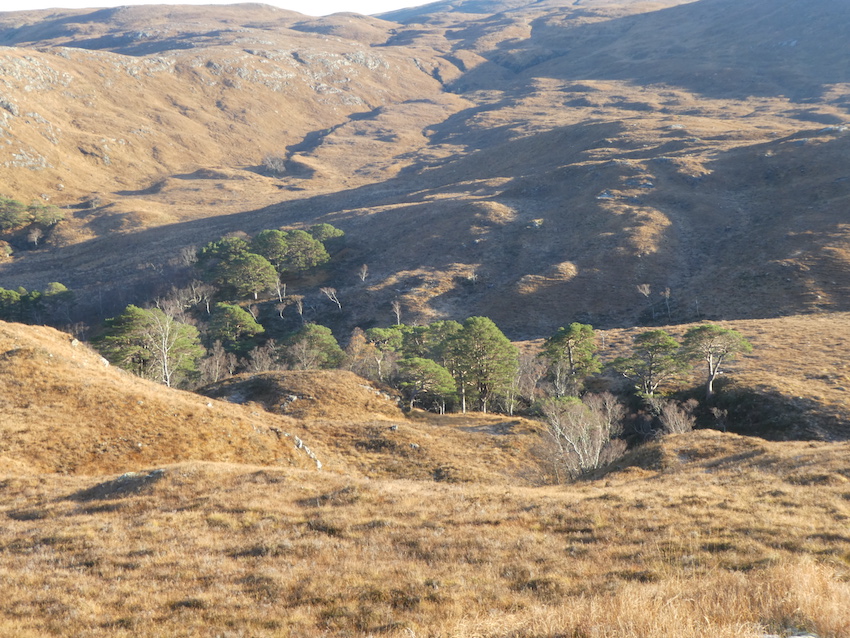
First principles
James Fenton encourages us to use the Highlands we see today as our starting point, not what might have been the case before, or what we think might have been the case before, and to think about the basics of what might be going on from first principles.
In the summer months, we see a vast over- abundance of vegetation on our mountains. The theoretical potential carrying capacity of this might be 70 – 80 deer per hundred hectares if no other herbivores were present and there was no winter. The winter season of shortage does of course limit the theoretical population, and other commentators have estimated the carrying capacity of much of the western Highlands at 16 – 18 deer per hundred hectares. Management intervention usually limits actual populations to 8 – 10 deer per hundred hectares in the west and north west. While these figures will vary depending on local conditions, the important point is that our upland habitats will naturally sustain more animals than the 4 – 8 deer per hundred hectares commonly cited as being required for native woodland regeneration. I would say that in many areas, the actual density required would be much lower than this. So, to get woodland regeneration, we need to fight against what nature wants to do. Some people will say, “Ah, but the wolves are missing!” James Fenton will say that our woodland decline primarily took place at a time when wolves where common and very much part of our upland ecology, very much before significant human intervention, and how many wolves would be required to kill the 70,000 red deer that we cull annually today? Wolves are a red herring. There is a more powerful force at play it seems.
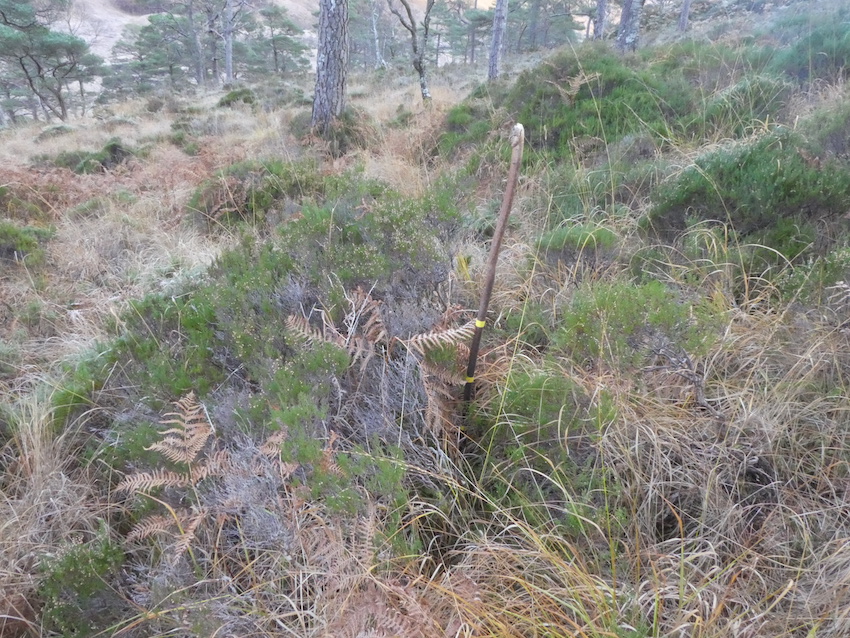
At 4 – 8 deer per hundred hectares, 99 per cent of total vegetation growth is not utilised. This is an unbalanced ecosystem which is very badly skewed towards this primary production. It is difficult to keep numbers low when the vegetation is capable of sustaining so many more. This ungrazed vegetation dies back annually, and adds to the amount of organic matter in the soil. Acidic conditions slow its breakdown, and it builds up, increasing the capacity of the soil to hold water. Gradually, peat forms, and slowly gets deeper. There comes a point where the mineral soils are buried too deeply for trees to access and to grow. The deer we have today cannot physically eat enough vegetation to prevent peat from forming. Is this then the dominant force in our Highland landscapes? In our current climate, are woodlands really the climax community as we will have been taught, or is moorland or peatland the likely climax community going forwards? If it is, then where might we expect trees still to survive?
Where will trees persist?
The paper looks at a number of factors that help trees to survive in the presence of grazing animals. If the factors are present, then trees can survive. If they are not, then the balance is tipped towards a more open landscape.
Trees stand a better chance of getting away if they grow quickly. So, Scots Pine growing on mineral soils at Glen Feshie that can put on 30 cms a year have a better chance of getting established than similar trees putting on 2 cms a year on wet peatland in Lochaber. The difference can be profound, but few people articulate this.
Thorny shrubs can allow trees to get away. In the Highlands, this is usually restricted to gorse bushes at a very localised level, and does not affect the greater part of the Highland landscape.
In continental climates, snow can cover and protect seedlings, or prevent herbivores from reaching key areas. This is rarely the case in Scotland.
Tree morphology can deter browsing. Most of our native species are palatable to deer, although some less so than others. Spruce trees are more resilient. Rhododendrons are unpalatable. We see both spreading in Scotland, sometimes at the expense of our native species. This suggests we may have to accept these species as part of the mix in the future.
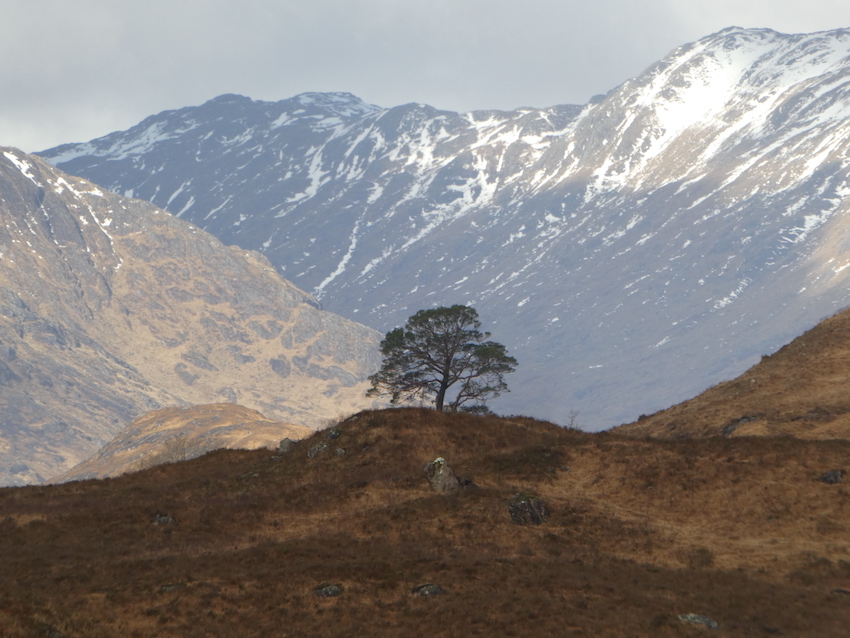
Artificial deer reductions by man can be targeted to help regeneration schemes, and there are some good examples of this in Scotland. This replicates the effect of predators on locations favoured by them. Sometimes, there can be episodic but unplanned reductions in herbivores that allow trees to get away. For example, disease in rabbits allowed a huge area of birch and Scots Pine to get away in eastern Scotland in the 1950s. Sheep reductions in the 2000s have allowed modest woodland expansion in some areas of the Highlands.
Cliffs and gorges prevent access to trees and allow them to get away. Such areas also often have better soils as well.
A combination of some or all of the above can certainly allow trees to survive at a local scale in Scotland.
To get trees away at a more significant level, you do need to think about the seed supply available, and how susceptible the ground conditions are. Speed of growth is related to this and very important. There is no doubt in my mind that if trees have access to mineral soil and can grow quickly, then they stand a much better chance. Where peat or wet heath predominates, then everything becomes much more difficult, deer numbers need to be much lower, and results are always poorer. Podsolization is also much more likely in such a climate, and this provides another barrier to tree growth that we usually cannot see. In many areas, you wonder if it is worth it. We are all aware of native woodlands that are hemmed in by peatland and podsols/iron pans as well and doing anything with them is very difficult. If it can’t be planted without significant interventions, it is unlikely to regenerate, but we tend not to articulate this. In this ongoing battle between trees and bog, so gradual that we can usually only appreciate it after many years of experience, which is going to win?
It is likely that, over much of western Scotland, it is the bogs which will dominate in the end, and will ultimately shape our future landscapes more than deer will, although peat cannot go on getting thicker for ever, and erosion naturally sets in. A lot of the area is too steep for peat development and gravity pulls it downhill, although that doesn’t stop us from trying to ‘restore’ eroded peat on side slopes today. The accumulation of peat is a much stronger force which even the deer cannot affect. The absence of earthworms is also key, brought about by decreasing pH. The “wet desert” may in fact be the natural climax community because it is self- perpetuating and more resilient in the long run. This was the view of Fraser in 1933 (Fraser, G.K. 1933. Studies of Scottish moorland in relation to tree growth. Bulletin Forestry Commission, No.15, HMSO), and also of James Geikie in 1866, but most people today prefer to think like Fraser Darling. Peatland has a momentum that is difficult to resist. Trees are more sensitive, and require sustained and more significant interventions to maintain them. If they don’t get that, they may well go backwards, or be restricted to smaller areas only.
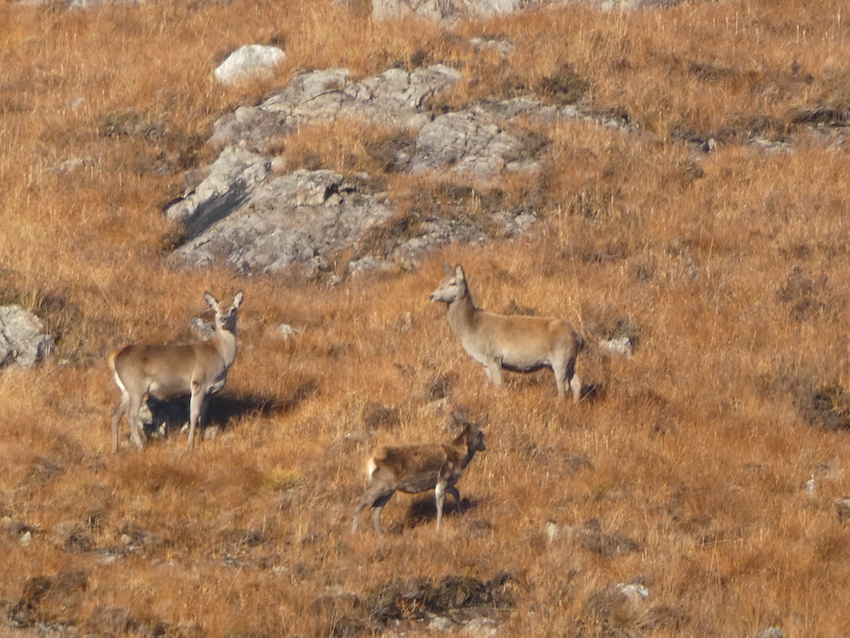
However, an important part of James Fenton’s paper is to articulate why woodland died out even on better slopes without peat bogs and this is where the scenarios for persistence of woodland in the presence of grazing discussed above becomes important. It is not only the presence of peat restricting woodland. The other components listed above affect the ability of native woods to regenerate as well.
-If we want more trees in Scotland, especially if we want to regenerate woodlands by deer control, then we have to be more aware of the dynamics at play, to know where interventions are most likely to be successful, and where the forces against us may be too strong. On many sites, it is possible to return the soils to an earlier post-glacial state by ploughing, mounding and fertilising, but to do that on a particular site, we need to explore why we want trees there, and be sure about what the rationale is.
This is important because we know that ground preparations can oxidise the organic component of soils more generally (not just peat), releasing CO2 and actually contributing to global warming. A better approach may be to allow shallow podsols to go on and develop peat, this being a better way to mitigate global warming than planting on them with all the massive interventions that this would likely require.
If we can start to think in this way, and I suggest that we should, then James Fenton will have made a very important contribution to the understanding we have of our natural heritage and what is really going on in our uplands. Our response to a changing climate going forwards must be informed by the context of what happened over 10,000 years of changing climate in the past. More trees in all locations may not be the answer. A large part of our upland landscapes should always remain open.
Victor Clements is Secretary to the Breadalbane Deer Management Group, is a member of the Executive Committee of ADMG, and works as a woodland advisor, based in Aberfeldy.

